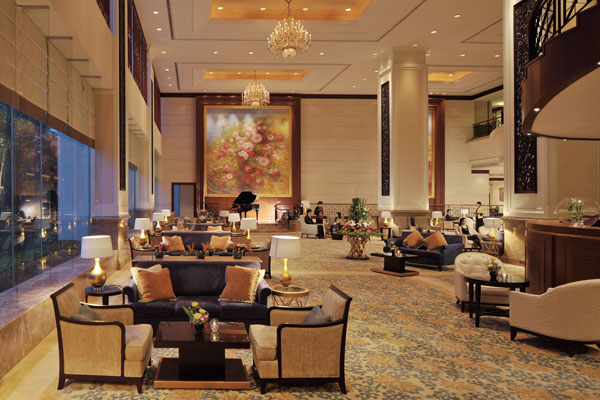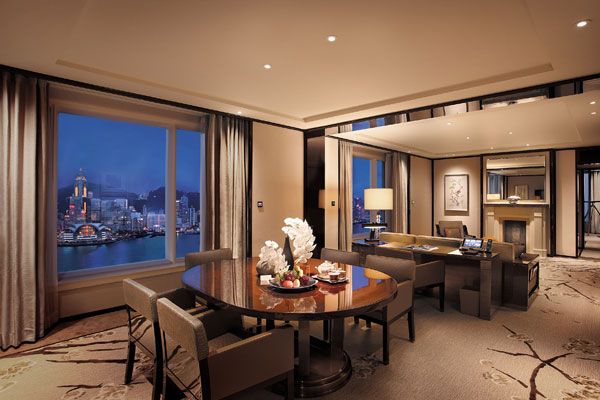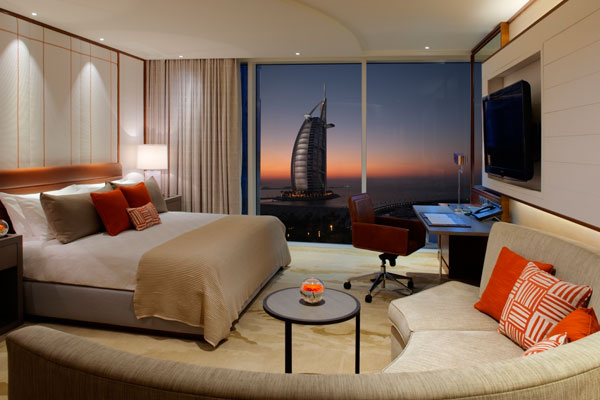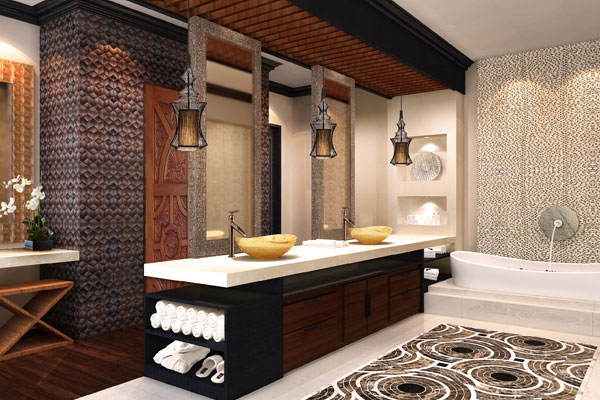In town recently for Knowledge of Design Week 2014, Ariane Steinbeck from The Gettys Group – which is known for its hospitality projects – talks to Christie Lee about space, neighbour-centric designs and sustainability.

July 2nd, 2014
Lazing at the beach, downing mojitos on a cruise and alpine skiing in the Swiss Alps are the stuff that (many) perfect vacations are made of, yet never underestimate the restorative power that a well-appointed hotel can give the avid traveller. It’s a notion that The Gettys Group understands all too well. Specialising in interior and hotel design, the Chicago-based firm’s portfolio includes such noted projects as the Hotel Felix in Chicago, Jumeirah Beach Hotel in Dubai and Hong Kong’s own The Peninsula.
We grabbed Ariane Steinbeck, Manager Director/Principal of The Gettys Group for a chat, following her talk on ‘Green Spatial Design’ at Knowledge of Design Week 2014 in Hong Kong.

Lobby at The Peninsula, Hong Kong
How does The Gettys Group differ from other hotel design groups?
The very moniker “group” differentiates us from our competitors. We provide more than just interior design services. We round out our hospitality-focused practice with brand design, procurement and development consulting services. This puts us squarely at the intersection of design, implementation and strategic thinking. Our international presence, multi-disciplinary expertise, commercial acumen and big picture understanding enables us to offer complete solutions.
Within the interior design practice, we work in a very collaborative environment without just one dominant ‘design personality’ at the head of our design operations. We encourage people at all levels to provide input and encourage dissent and conversation in the design process. That way, everyone on our team gets the opportunity to be ‘heard’ and we can have a much deeper conversation about why or why not something may very well be beautiful, but not practical.

Suite at The Peninsula, Hong Kong
What are some major differences between designing a heritage, 300-room hotel like the Peninsula and a ‘hipper’ hotel like the Milenorth in Chicago?
There’s not much difference, as design is really just problem solving. Different problems have different solutions and since we don’t operate under a distinctive ‘style’ we have the freedom to adapt to many different directions, may they be ‘hip’ or at the highest level of refinement. What’s important is to understand what the client wants.

Guestroom at The Jumeirah Beach Hotel, Dubai
How much has the perception of space and interaction between different spaces changed over the last three decades? How is this change reflected in your projects?
Lobbies have become more like gathering spaces and more user-friendly in the last two decades. Exterior and interior interactions are imperative in a resort setting, but where the project is located obviously plays a big role…
A lot of your hotel designs pay tribute to the history and heritage of the place. How do you find the balance between creating a neighbour-centric hub and a design that speaks to a global audience?
I don’t think any hotel is exciting unless it brings something local to the guest. Today’s traveller is much more adventurous and seeks out a connection to the country or city they are travelling to. Having said that, it doesn’t mean that the spaces should be 100% local – I personally prefer a mix or something more subtle than, say, just local art. A sense of place does not mean it has to be indigenous; a sophisticated mix or a well-done budget restaurant can be just as exciting.

Reception area of a luxury hotel in Doha
‘Sustainable design’ is a term that gets bantered around a lot these days. How do you define sustainable design? And how is it being incorporated into your designs?
For me sustainability, at least on the interiors side of design, is more about making smart choices than following any guidelines. It means less renovation over a longer time period. It means restoring, if possible, rather than building new.
It also means using as much local materials and sources as possible, if locally available craftsmanship can provide the support. The use of hardwearing materials will also make bathroom walls and flooring last longer – 15 to 25 years instead of five.

Bathroom, Visun Villas, Hainan
What are some projects that The Gettys Group Hong Kong is working on?
A restoration of a Palace in Morocco into a hotel, a five star hotel renovation in Doha, Qatar, as well as several smaller projects in Saudi Arabia. A multi-family residential project in Hong Kong is in the pipeline. We’re also building the biggest ballroom and meeting facility in the Philippines, in addition to several hotels and casino projects there.
The Gettys Group
gettys.com
INDESIGN is on instagram
Follow @indesignlive
A searchable and comprehensive guide for specifying leading products and their suppliers
Keep up to date with the latest and greatest from our industry BFF's!

In design, the concept of absence is particularly powerful – it’s the abundant potential of deliberate non-presence that amplifies the impact of what is. And it is this realm of sophisticated subtraction that Gaggenau’s Dishwasher 400 Series so generously – and quietly – occupies.

Schneider Electric’s new range are making bulky outlets a thing of the past with the new UNICA X collection.

Elevate any space with statement lighting to illuminate and inspire.

In this candid interview, the culinary mastermind behind Singapore’s Nouri and Appetite talks about food as an act of human connection that transcends borders and accolades, the crucial role of technology in preserving its unifying power, and finding a kindred spirit in Gaggenau’s reverence for tradition and relentless pursuit of innovation.
The internet never sleeps! Here's the stuff you might have missed

Emerging from millennia of geological force, each exquisite slab tells a singular narrative etched by time and tectonic power. And this luxurious dwelling serves as a masterful recontextualisation of this enduring beauty, highlighting the extraordinary aesthetic and uncompromising strength as the ultimate expressions of residential grandeur.

His name is revered and his work acclaimed, and John Wardle continues to make his presence felt on the built landscape of Australia like no other.